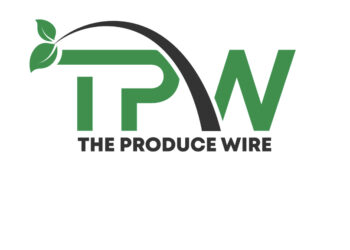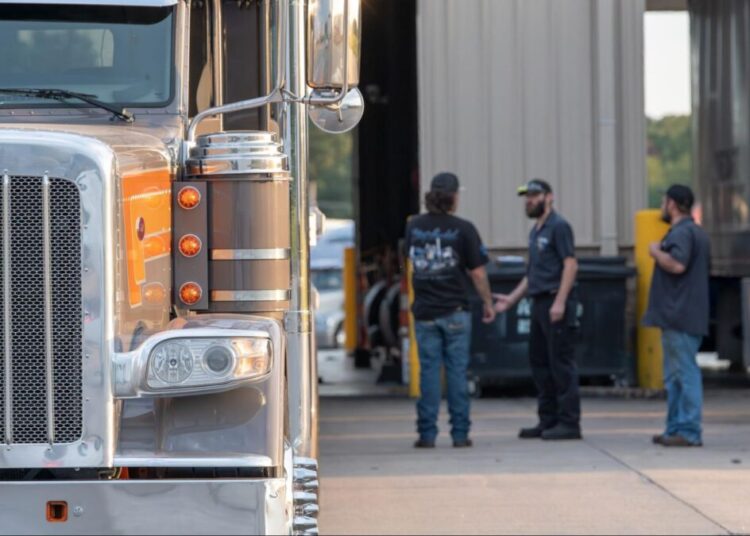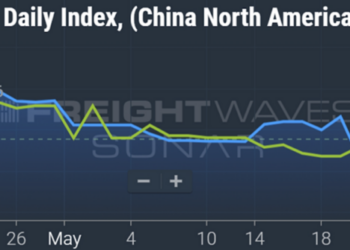(Photo: Jim Allen/FreightWaves)
Why More Trucks Won’t Fix the Problem – And Could Actually Wreck the Spot Market
A new bill just dropped in Washington – the Strengthening Supply Chains Through Truck Driver Incentives Act – and it’s being pitched as a solution to fix the “driver shortage,” unclog the supply chain and lower costs for American families. Congressman Zach Nunn of Iowa introduced this legislation, which he claims will help recruit more drivers to an already strained supply.
Sounds beneficial on the surface, right? But here’s the problem:
It’s based on a completely outdated view of the trucking industry. If passed, this bill could actually destroy small trucking businesses – especially those relying on the spot market – by flooding the system with more trucks when what we really need is more freight.
Let’s explain using a simple analogy.
Chart: OTVI (Outbound Tender Volume Index) is an indicator that provides insight as to how much available freight is currently in the marketplace. Since the recovery from the Christmas lull, there hasn’t been much to get excited over in terms of demand for small carriers.
The Market Right Now: Like a Concert With Not Enough Hungry People
Imagine you’re at a concert where there are only 10 food trucks serving the crowd. It’s competitive, but those 10 trucks can stay busy.
Now imagine 80 more food trucks show up … but the crowd size doesn’t grow. Suddenly, everyone is competing for the same limited number of customers. Food trucks start undercutting each other, dropping prices just to stay busy, and some go home empty-handed or in the red.
That’s exactly what happens when you add tens of thousands of new trucks to the freight market without increasing the amount of freight available.
The Real Issue Isn’t a Driver Shortage – It’s a Freight Shortage
The bill’s supporters cite a 2022 stat from the American Trucking Associations that claimed we were short about 78,800 drivers. But that number mostly applies to large fleet turnover – not to the actual amount of freight needing to be hauled.
Right now, the Outbound Tender Volume Index (OTVI) – which measures how much freight is being offered to carriers – is sitting around 10,405. That number isn’t going up. In fact, it’s flat, maybe even declining.
Meanwhile, the average spot rate is around $2.27 per mile, according to SONAR. That’s not a terrible number, but it’s barely holding, and we haven’t even added more trucks yet.
We Modeled What Happens If You Add 80,000 More Trucks
Here’s where things get dangerous. We ran the numbers and looked at what would happen if you suddenly added 80,000 more dry van trucks to the market – whether through tax credits, apprenticeships or CDL grants.
The result? Rates will take a hit. And it doesn’t take long.
If 80,000 additional dry van trucks are introduced into the market, the projected national average spot rate is expected to fall within a likely range of $2.04 to $2.16 per mile. In a worst-case scenario – if the added capacity triggers aggressive rate competition and undercutting – the spot market could dip as low as $1.93 per mile. These changes would likely occur within three to six weeks of the new capacity entering the system, depending on how quickly the trucks are deployed and how regional freight volumes respond.
That means if you’re running a 1,000-mile load, you could go from making $2,270 to $1,930. That’s $340 less revenue on a single load, just because there are too many trucks competing for the same freight.
This Helps Big Fleets, Not the Backbone of the Industry
Who’s backing this bill? The American Trucking Associations, Teamsters and other groups that represent the megacarriers. These are companies that churn through drivers by the thousands. Of course they want tax credits to bring in more drivers – they need warm bodies in trucks.
But what they don’t tell you is that the spot market – where independent carriers and small fleets live – can’t survive if rates drop even a little bit.
Adding more trucks into an already soft freight market doesn’t fix the supply chain. It just breaks the small carrier.
Why This Is So Dangerous for Small Fleets
Many small carriers have a break-even cost between $1.75 and $2.10 per mile on average.
If spot rates fall below $2.00 – and they absolutely will if this bill is successful – thousands of small fleets could go under.
Insurance is up. Maintenance is up. Fuel is unpredictable. The only thing we don’t need right now is more trucks with nowhere to go.
What the Industry Really Needs
If Congress actually wants to help trucking, it needs to stop pushing out more CDL graduates like it’s 2019 and start focusing on retention, fair rates and freight access. Here’s what would actually help:
Programs that support and scale existing carriers, not just create new ones.
Funding for technology and dispatch tools that help carriers run more efficiently.
Access to direct shippers, not just more brokered freight.
Better training on business operations so carriers can stay profitable long term.
Final Word
This bill sounds helpful to those who wrote it, but it’s built on a flawed premise. More trucks do not mean better supply chains if there’s no freight for them to haul. If you flood the market, spot rates crash, and the small carriers that built this industry get pushed out.
It’s time for lawmakers to look past the lobby groups and listen to the folks actually out here hauling the freight. Because the people writing this bill? They’re solving a problem we don’t have – and creating one we can’t afford.
The iconic Kenworth W900 will be phased out of production, bringing an end to an era of trucking dominance. (Photo: Kenworth)
End of an Era: Kenworth Announces Final Production for W900, T800 and C500 Models
Kenworth just dropped a bombshell – production of the legendary W900, T800W and C500 will officially end in 2026.
If you’re in this industry, you already know: The W900 isn’t just a truck, it’s a symbol – a long-hood icon that’s been on the road since 1963, built for real haulers who care about performance, style and reliability. Same goes for the T800W, the backbone of vocational work, and the C500, one of the most rugged off-road trucks ever built.
This decision is tied to evolving emissions standards and new tech demands, but let’s call it what it is: the end of an era for true blue-collar, driver-first engineering.
Kenworth says its W990 and T880 platforms will carry the torch. But for many of us who built our careers around the look, sound and feel of the W900, there’s just no substitute.
If you’ve ever dreamed of owning one of these classics, now is the time. Final order windows will be announced later this year – but when they’re gone, they’re gone. At the Mid-America Trucking Show, they showcased one of the final 1,000 units in production for this year.
Derek Barrs (left) received the leadership recognition award from 2023-2024 CVSA President Col. Russ Christoferson, with the Montana Department of Transportation, at the 2024 CVSA Annual Conference and Exhibition. (Photo: CVSA)
FMCSA May See New Leadership – Again
Since 2018, we’ve seen six different administrators rotate through the Federal Motor Carrier Safety Administration. That kind of turnover creates confusion, inconsistency and a lack of long-term vision – especially for small carriers who rely on stable, clear regulatory guidance to operate safely and profitably.
Now, the Commercial Vehicle Safety Alliance (CVSA) is backing Derek Barrs as the next FMCSA administrator. Barrs brings two decades of law enforcement and safety experience, having served as chief of the Florida Highway Patrol and later as associate VP at HNTB, a transportation infrastructure firm. He’s also held leadership roles within CVSA and chaired modernization committees, and he currently sits on the ATA’s Law Enforcement Advisory Board.
On paper, that all sounds good – but for many small fleet owners, the concern isn’t about credentials. It’s about consistency. The revolving door at FMCSA has left many of us unsure where the agency truly stands on the practical issues that affect our day-to-day operations: ELD enforcement, broker transparency, safety audits and the integration of new tech that often favors large carriers.
While Barrs has built a strong resume within the safety and enforcement world, the big question remains: Will he finally bring steady leadership and real industry understanding to FMCSA – or will this be another short-term appointment that fails to move the needle for small carriers?
We’ve seen the awards. We’ve heard the endorsements. Now it’s time to see if we’ll get an administrator who actually listens to the backbone of this industry – the small fleets and owner-operators keeping America moving.
Let’s hope this isn’t just another name in the long line of temporary leadership. Because what we need isn’t another resume – we need someone who shows up, stays put and leads with clarity.
The post This New Bill Could Crash the Spot Market – Here’s What Small Carriers Need to Know appeared first on FreightWaves.














